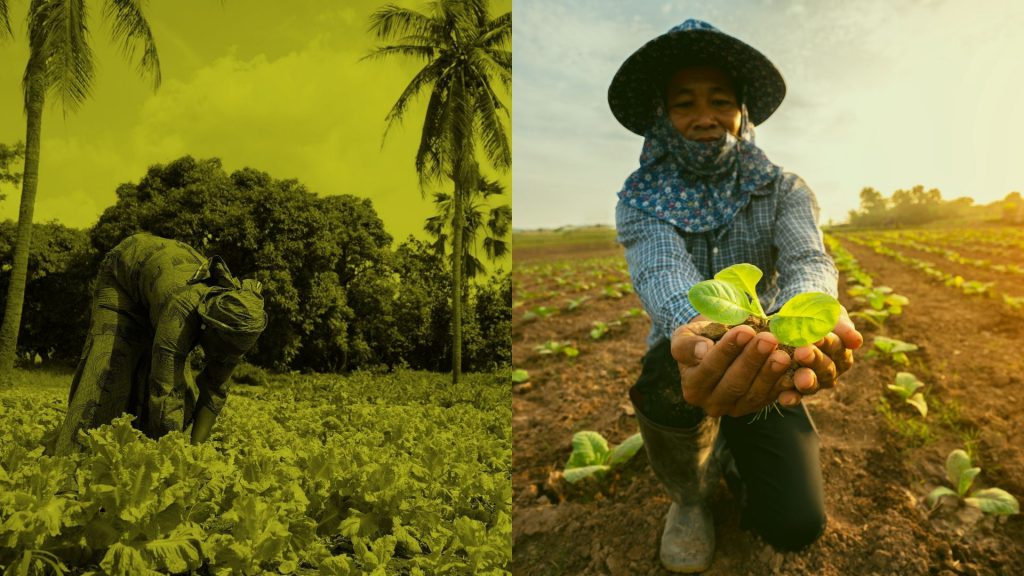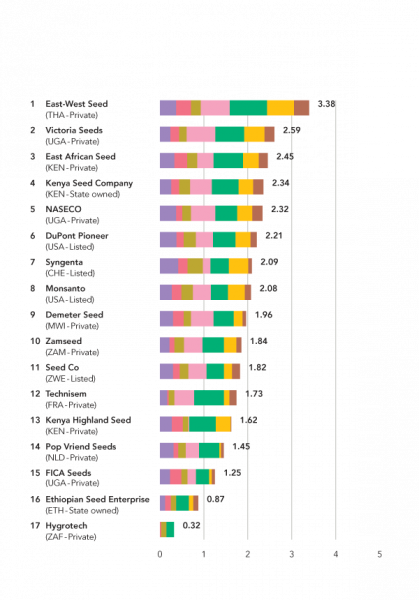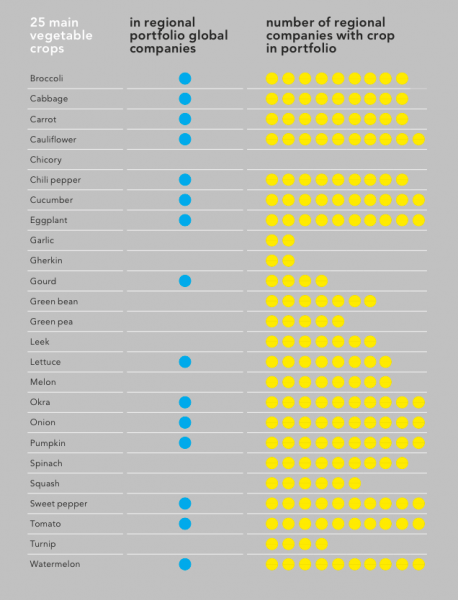To promote the consumption of more nutritious food, the World Bank hosted a webinar on 13 April 2017 on the role the seed industry can play in promoting smallholder diversification into vegetables. The first Access to Seeds Index shows that the seed industry offers a broad portfolio of vegetable seeds and that regional companies are further broadening that portfolio.
The first Access to Seeds Index shows that global seed companies as a whole offer a relatively broad portfolio of vegetable seeds in Index regions, indicating that these companies are equipped with the appropriate genetic material for these regions. With only a few exceptions, such as green pea, garlic and turnip, global vegetable seed companies have breeding or testing programs for all regions and crops covered by the Index.
Zooming in on Eastern Africa, the Regional Index makes it clear that the portfolios of regional vegetable seed companies complement the portfolios of their global peers, with green pea, garlic and turnip also available but an absence of chicory. Although no data is available at shop or village level, the results indicate that, at country level, farmers can choose between multiple crops and suppliers.
It should be noted, however, that the presence of multiple suppliers does not automatically mean real choice between varieties for farmers. Most regional companies supplying vegetable seeds have a broad sales portfolio but no breeding program of their own, indicating that they rely on wholesale suppliers. This effectively means that if companies obtain their seeds from the same source, farmers have the choice between different packages containing the same seeds.
Exceptions are Kenya Seed Company, which has its own breeding programs for specific vegetable crops, and Victoria Seeds, which performs variety trials for vegetable crops for specific agroecological zones. In Eastern Africa, the main sources for newly bred vegetable seed varieties are currently global companies such as East-West Seed, Pop Vriend Seeds and Technisem. It is a fine example of how global and regional companies can leverage eachothers strengths in breeding and distribution respectively.
Link to Mr. Ido Verhagen’s presentation on Slideshare.
Link to the video of the webinar on YouTube.







